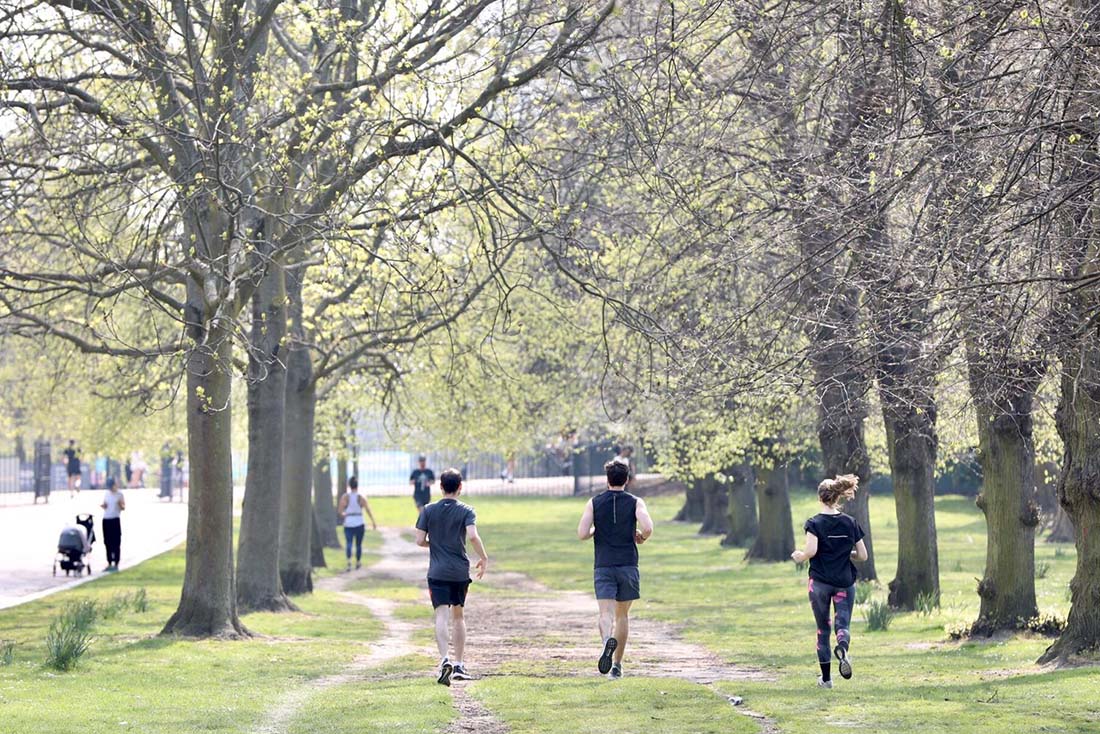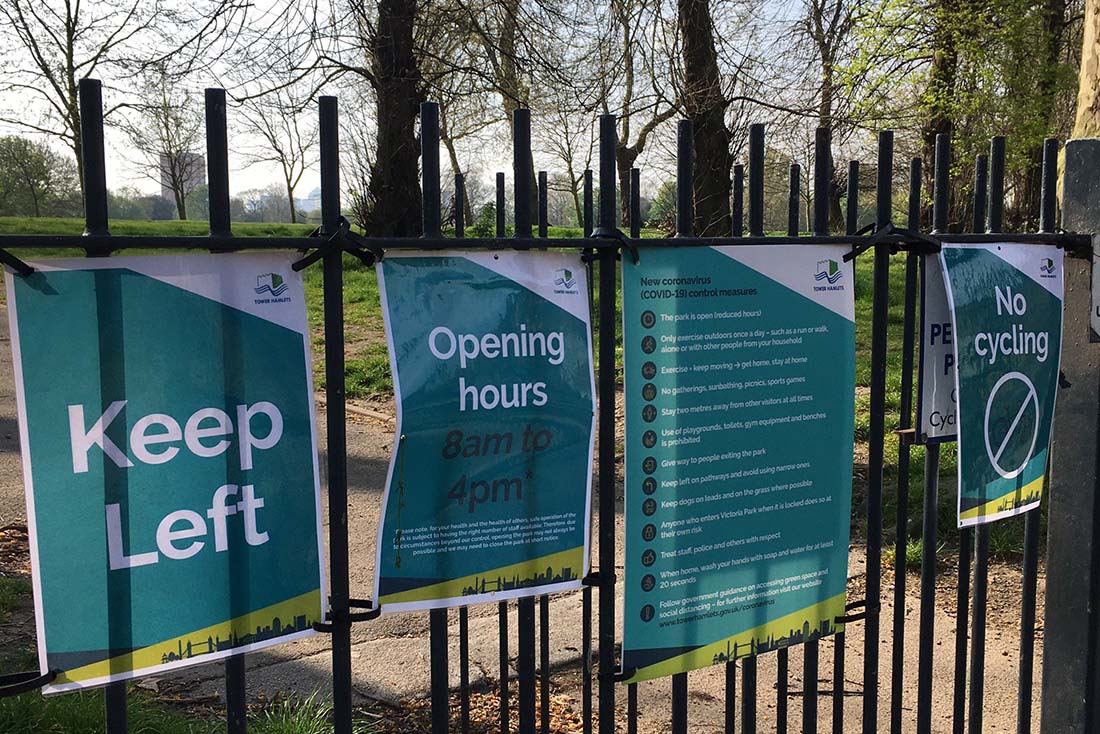Someone sunbathing in the park pretends to be doing a plank as the police drive by. This is where we’re at in the UK right now, as lockdown continues. Since 23rd March, we’ve been allowed only to go out for one form of exercise per day, alone or with members of our household, shopping for basic necessities, any medical need and essential travel for work purposes.
As a regular runner and general supporter of being active, I initially supported the idea that people should be allowed to go out for exercise. But over the last couple of weeks, I’ve begun to question whether or not the phrasing of this policy really matches the intentions of it and, in turn, what this really says about the underlying nature of it.
Further analysis suggest this is a policy that excludes a significant proportion of the population and is now leading to major divides between users of public spaces. Walkers are complaining about runners and the air speed or their ‘micro-droplets’ (turns out the evidence on this isn’t clear, but the complaint continue). Runners are complaining about walkers taking up too much of the path. Park authorities are actively stopping people sitting on benches. And there are complaints from both users and authorities of children playing, and possibly having too much fun?
This discussion of what exercise means reminded me of the philosophical discussion of what really counts as exercise. Does something such as typing this blog, for example, count as exercise, due to my fingers moving? And there comes part of the dilemma - where do you do the draw line? Matt Hancock threatened the UK with ‘banning exercise’ last weekend, but how can you ban exercise? You can ban going outdoors for exercise, but he’s going to have do something different to ban exercise per se. Michael Gove has suggested that up to one hour per day of exercise is about right. Yet, the Chief Medical Officer’s guidance suggests adults only need to accumulate 2.5 hours per week, so less than this suggestion. Yes, of course, more is better and I would be the first to advocate for more. But this highlights how the whole policy just doesn’t seem to add up.
The real question, in my view, is if it was really the intention of this policy for people to be able to exercise? Because if it is, it seems to have wholly missed the mark. Those who are regular exercisers like myself could manage to do what we need do indoors and at home. We might have to compromise a bit, but we could get our breathing rate up, lift some weights around and do enough to keep ourselves active. What this policy approach misses is two points, which I suggest the government simply did not want to acknowledge.

Firstly, it forgets about those that do not consider themselves as doing regular ‘exercise’. For many, particularly in more disadvantaged groups, their daily exercise is often their walk to the shops or to the bus stop. They do not consider themselves to ‘do exercise’ - they simply do what they need to get around. It seems they are less likely to use their ‘exercise token’ (as runners and cyclists have taken to calling it), because as far as they’re concerned it’s not for them. Children, also, don’t generally ‘do exercise.’ Yet they are one of groups who need it most. Guidelines suggest children should do be active for at least one hour per day, and under 5s for at least three hours per day. Most of their daily activity will be gained through play. This is not reflected or acknowledged in this adult-centred policy, which implies that exercise is generally running or walking in a straight line. And for a parent who consider their child not to ‘do exercise’, this policy approach suggests they should simply keep them indoors. The policy approach appears to actively discourage these groups from going outdoors.
Secondly, this policy misses the real point of why being able to get outside on a daily basis is important. Exercise in its purest form can be done indoors if you really want to. What can’t be got indoors is a change of scene, time in the natural environment, an opportunity to see others (from a distance) and give a nod or a quick hello, a time to relax. Although the mental health benefits of exercise have been touched upon, none of these other benefits of being outdoors are recognised in the policy.

In recent developments in the last week in the UK, authorities have been clamping down on people’s use of public space, interpreting these guidelines as they see fit. Unfortunately, Lambeth Council has interpreted exercise as only walking or running and banned ball games. In the previously closed and now reopened Victoria Park in East London, you must walk on the left and not stop. In Haringey they now have loudspeakers telling people they should be either be exercising ot to go home, with seeming disregard for those who may need to get outdoors for their mental health or are exercising but need to take a break. For this reason, benches have been taped off in some parks. Children appear to have been forgotten altogether. They don’t generally run or walk in a straight line and play is their exercise. Yet, parents with children in public parks are being asked to leave, as they’re not seen to be exercising. Older people who just need some time out of the house are being told they can’t sit down and rest. People are being shamed for needing a rest or wanting to let their children play.
As much as I dislike users of these public space fighting about whose it is and who has the most right to use it, I put the blame for this at the government and a policy approach that has effectively demonised those groups that are already often excluded from the public realm: children, older people, people with disabilities, and disadvantaged groups. I fear that it is these groups that don’t fit into this narrow definition of ‘exercise’ that will be suffering the most. But yes, if you’re a walker, runner or a dog, you’re ok.